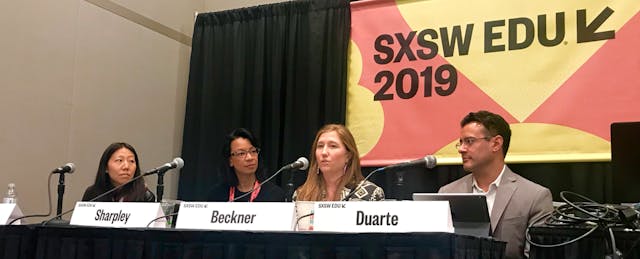As venture capitalists and private-equity firms continue to invest billions of dollars in education, they’re increasingly directing their funds to early childhood development, a long-neglected subset of the education population, according to a panel of impact investors this week at SXSW EDU.
It’s estimated that more than one million new neural connections are formed in a child’s brain every second, according to Harvard’s Center on the Developing Child, making the first few years of a child’s life some of the most critical to growth and learning. This doesn’t just matter for their health and development. It has economic repercussions, too. Studies show that for every dollar invested in early childhood development, the returns are between $4 and $9 for the individual and have long-term benefits for society as well.
These facts notwithstanding, early childhood education has historically received less attention and capital from investors than K-12 and higher education.
In 2016, for example, just 3.6 percent of all venture capital dollars invested in edtech went toward early childhood development, said Maia Sharpley, a panelist and partner at Learn Capital.
But that trend is beginning to shift, according to Sharpley and panelists from Omidyar Network and Reach Capital. Since 2016, they said, government spending on early childhood programs has increased 17 percent and private capital has risen 12 percent.
On a larger scale, federal funding has grown 62 percent in the last decade, noted Ashley Beckner, a partner at Omidyar, and state funding for preschools alone has increased 47 percent in the last five years.
“This is an issue that is front and center right now on policymakers’ agenda,” Beckner said. “But it’s not just the policymakers. There’s been a massive campaign ... to help inform parents and teachers how important brain development is in the first five years of life.”
Learn Capital has a portfolio of 100 companies, about 10 of which are in early childhood, Sharpley said. She highlighted one called WonderSchool, which seeks to make child care more accessible by building a network of affordable early learner programs run out of educators’ and parents’ homes. WonderSchool helps with the training, licensing and marketing, which reduces the overhead costs of opening a center.
“You don’t have a lot of early childhood centers in lower socioeconomic areas,” Sharpley pointed out, so by enabling people to open facilities in their own homes, WonderSchool is sparking economic activity and “lifting up the entire neighborhood.”
Reach Capital started out with a portfolio heavily invested in K-12, but it evolved to include early learners after executives noticed a gap in access and quality as kids entered K-12, said Chian Gong, a principal at the firm: “That was the push for us to move into early childhood and begin thinking about what investments we could make there.”
Now, Reach has invested in five early childhood companies, including one called Winnie, an online community that vets and organizes information relevant to parents, from where to find the nearest changing table to good preschools in the area.
For many investors, the panelists said, the increased support for early learners is driven not only by the children, but by their parents. After all, it is the parents who the two aforementioned early childhood companies hope to serve and market to.
“We’re thinking very much about children from birth to age 5, but we’re also, each and every day, thinking about their parents,” said Beckner, the partner at Omidyar.
Beckner noted that about 22 percent of university students in the U.S. today are parents. “We’re looking at education through a two-generation lens and thinking about how we can support the entire family unit.”
Millennials now constitute the majority of parents with young children and seek out parenting advice from online resources more commonly than from friends and family, research shows.
“They’re digital natives, they’re comfortable on mobile, they’re actively seeking that information,” Gong said. “We have all these amazing nonprofits that have done a lot of work distilling that information about what’s important in the early years. I think technology is really well-poised to scale those now, now that people have phones.”


